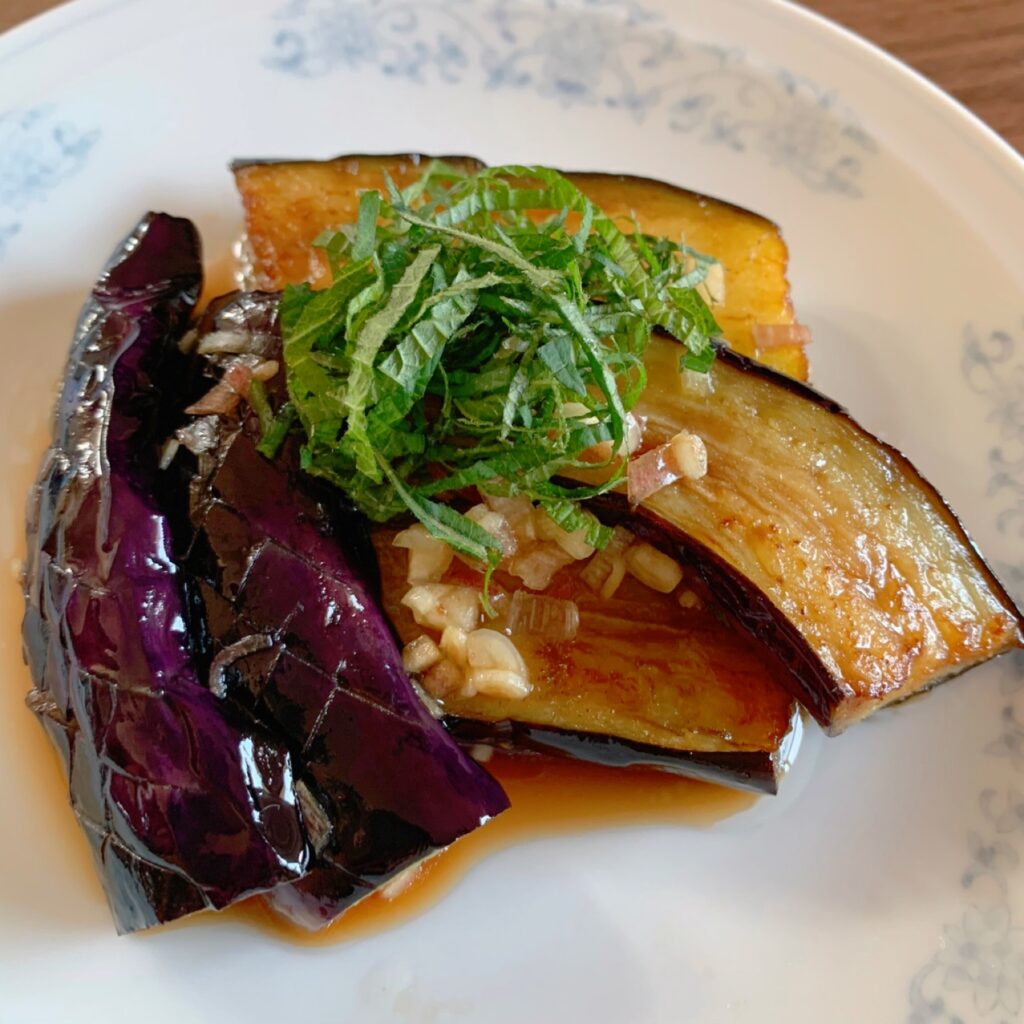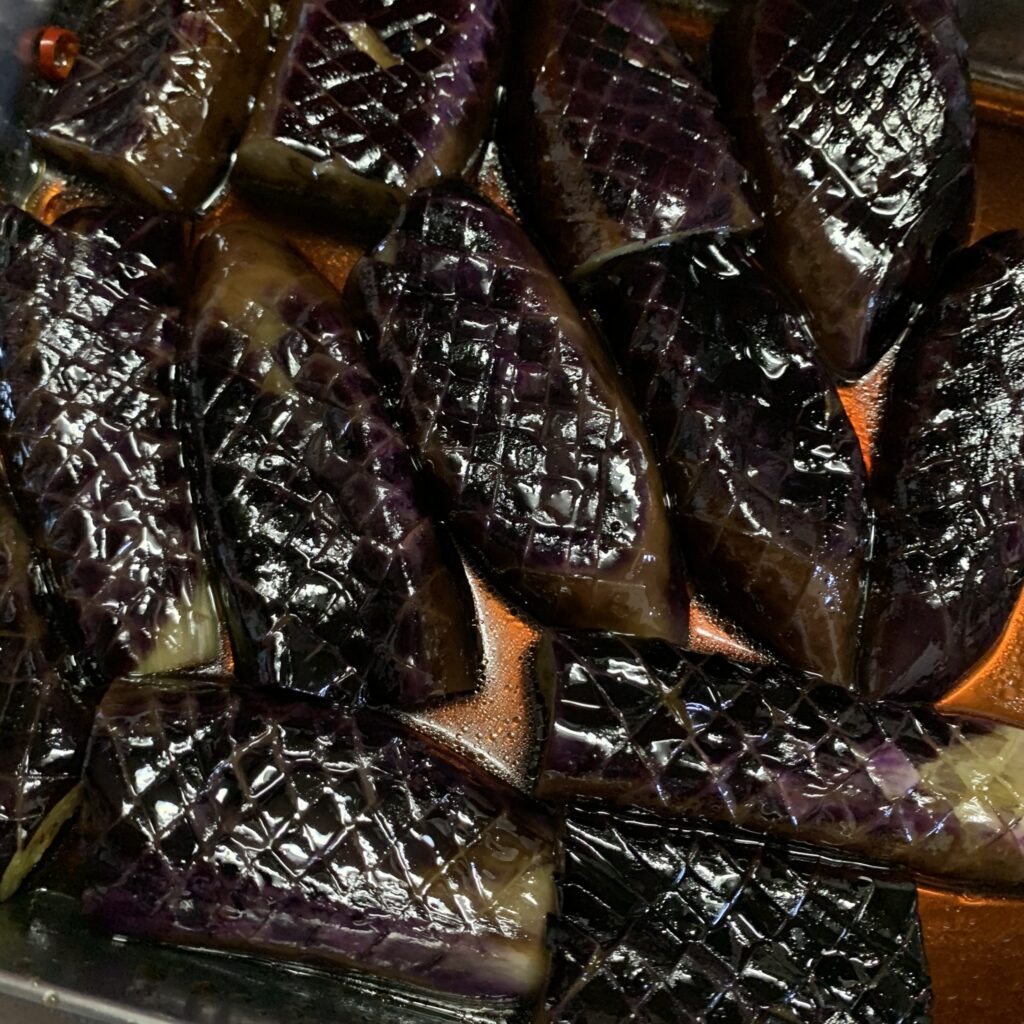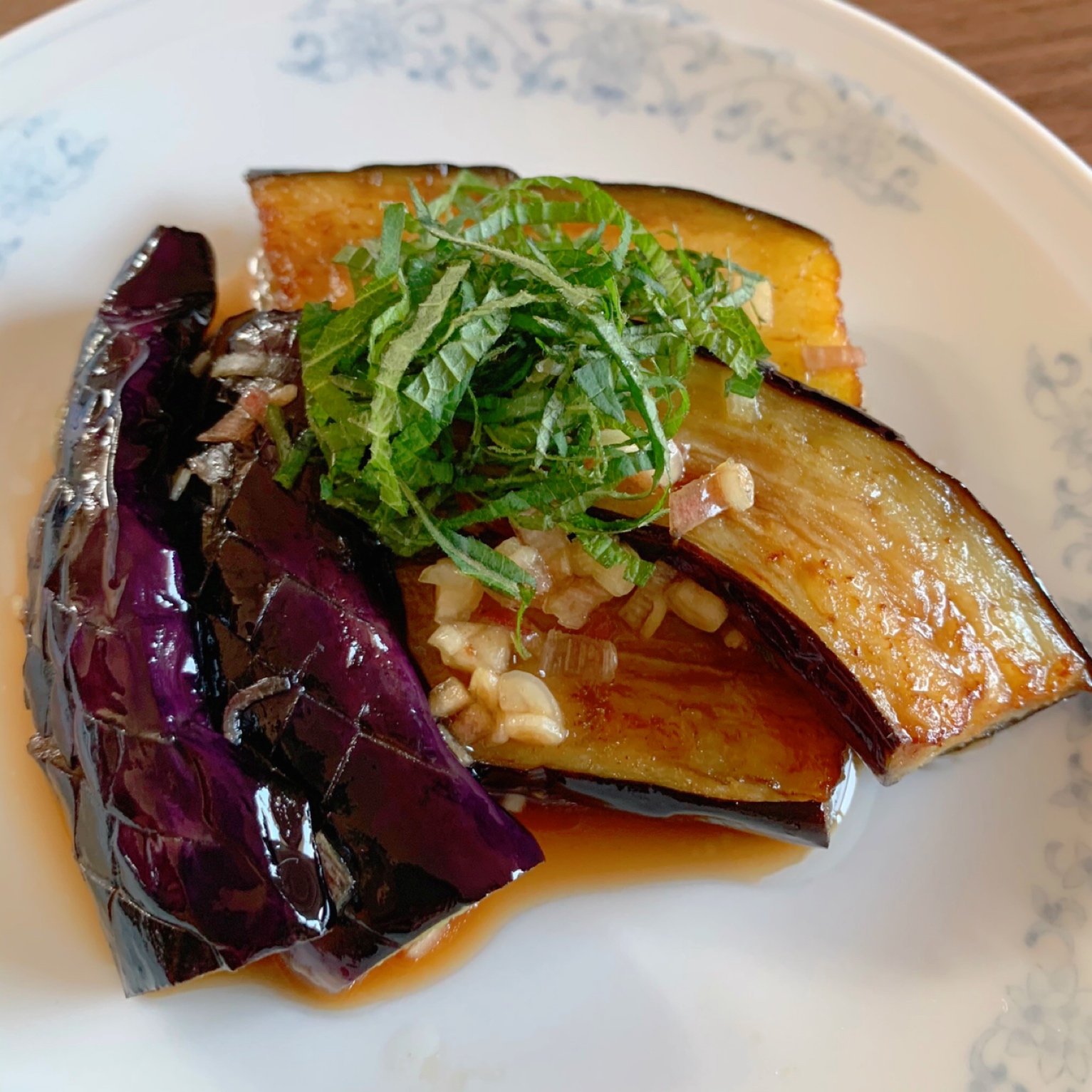
Nasu no agebitashi(ナスの揚げびたし)
nasu = eggplants age = deep-fry bitashi = soak,marine
This dish is made by deep-frying eggplant and then marinating it in soy sauce. The skin of the eggplant contains a polyphenol called nasunin, so it is eaten with the skin. It can be eaten either hot or cold and is delicious either way.
Eggplant can be used in a wide range of dishes, whether Japanese, Western, or Chinese. It absorbs oil and broth, making it juicy and delicious.
This is a recipe I always make in the summer when eggplant is in season.
The eggplant that has absorbed the oil is delicious on its own, but adding shiso and myoga ginger adds a refreshing touch.
The trick to making this dish delicious is to remove the lye and use an appropriate amount of oil.
Read the next section about lye.
Eggplants absorb a lot of oil, so you tend to use a lot of oil. However, if you use too much oil, it becomes oily and the taste becomes bad. One to two tablespoons of oil is appropriate per eggplant.
To minimize the amount of oil, coat the eggplant in oil before cooking it.
If you are using a lot of eggplant, it is a good idea to mix the oil with about 2 tablespoons of water before tossing with the eggplant.
What is akunuki ??
In Japanese, lye is called aku.
Eggplant contains a lot of lye, so when you cut it, the cut surface turns brown. Lye can also cause astringency.
In some dishes, the astringency can cause the dish to lose its flavor, so it is soaked in water for a process called “akunuki.”
Generally, to remove the astringency from eggplant, soak the cut eggplant in a bowl of water for 5 to 10 minutes. The eggplant will float, so it is a good idea to place a light plate on top.
If you soak it in water for too long, water-soluble nutrients such as nasunin will be washed away, so be careful not to soak it for too long.
For this dish, it is even better to use salt water for the akunuki. The salt concentration of salt water should be approximately 1 to 1.5%.
The amount of oil absorbed is affected by the moisture content of the ingredients. By soaking the eggplant in salt water, you can remove some of the moisture.
Therefore, this method helps prevent the eggplant from absorbing too much oil.
It also helps the eggplant cook more quickly, giving it a vibrant purple color.
You can sprinkle salt directly on the eggplant, but using salt water requires less salt, so this method is recommended.
NUTRITION FACTS of Nasu Agebitashi (Fried eggplant in mentsuyu)
- 178 kcal
- Protein 1.4 g
- Fat 17.1 g
- Carb 6.8 g
- Salt Equivalent 1.1 g
The calculations are based on the eggplant’s oil absorption being 100%, the eggplant’s salt absorption being 1%, and the seasoning’s salt absorption being 50%.
INGREDIENTS for Nasu Agebitashi (Fried eggplant in mentsuyu) (3SERVINGS)
- Eggplant 2 pieces 250g
- ★Water 700g
- ★Salt 7g
- ★Oil 20g
- Frying oil 50g
- ☆Dark soy sauce 20g
- ☆Mirin 20g
- ☆Hot water 30g
- ☆Dashi stock granules 2g
- ☆Sesame oil 2g
- ☆Myoga(Japanese ginger) 1 piece 15g
- Shiso leaves 2 sheet
Nasu Agebitashi (Fried eggplant in mentsuyu) COOKING INSTRUCTIONS
- Cut the eggplant into 7cm lengths.
- Make lattice cuts in the skin of the eggplant.
- Soak the eggplant in salted water for about 5 minutes.
- Wipe off any moisture on the surface with a paper towel.
- Toss the eggplant with the ★oil.
- Lightly drain the eggplant and place it in a frying pan.
- Heat enough oil to cover the eggplant to 170 degrees.
- Place the eggplant skin side down in the pot
- When the skin becomes glossy, turn it over
- Fry until the eggplant is completely coated with oil and tender.
- Deep fry the eggplant until browned, then place on a wire rack to drain the oil.
- Finely chop the myoga.
- Mix soy sauce, mirin, hot water, dashi stock granules, sesame oil, and myoga.
- Marinate the eggplant in the sauce.
- Chill the eggplant in the refrigerator for 1 hour.
- Cut the shiso leaves into thin strips.
- Place the shiso leaves on top when serving.





コメント